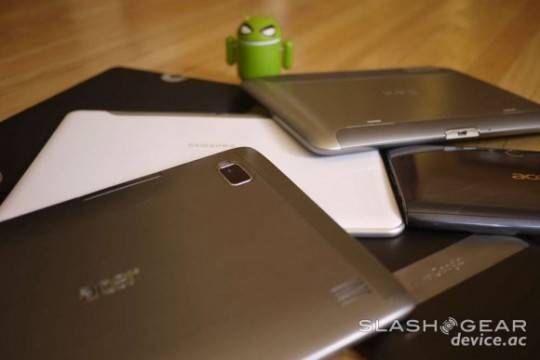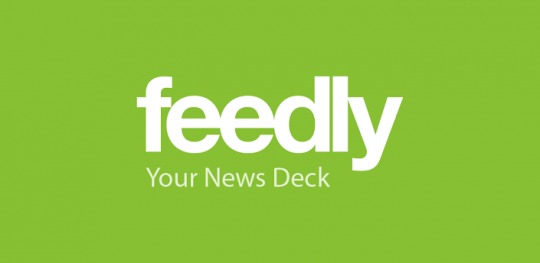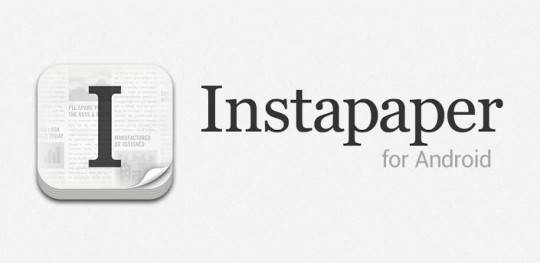
As 2013 morphs into 2014, we started discussing tablet apps, and which we use around here at Android Community. Which apps are in heavy use, and why? With Google making a point to focus on tablet apps, design and utility have been crucial points of contention this year. Some make the grade, others just don’t hold water. Some are pretty bland offerings, while others subtly impress. The choices here might surprise you, so read on to find more. Though the choices are personal, I think you’ll find a few gems here. We’ve also linked the headers to the Play Store app, so feel free to click them if you find something you like.
Weapon of choice
All tablets are not created equally, and Android has its share of obfuscated offerings. Though they’re found everywhere, Samsung’s take on Android is a bit heavy for my liking, and quite honestly dated. With a daily-use device — especially a tablet — I like a clean, modern interface. To my mind, TouchWiz just doesn’t cut it. Others like Sony have nice offerings, but can be a touch expensive, and hard to find.
I prefer a straightforward approach, which leads me to the Nexus 7 2013. I recently reviewed the LG G Pad Google Play Edition, and liked it enough, but the sound produced was terrible. For that reason above all, I couldn’t go with it, despite having hopes for the screen size. When I’m not using a Nexus 7, I like the iPad mini with Retina for the extra screen real estate. Sadly, the G Pad GPE couldn’t hold up as I hoped it would, leading me back to the 7-incher.
Kindle
Do I think the Kindle is somehow a top-tier tablet app? In regard to design, no. It’s nice enough, but what really gets me to the Kindle is the ecosystem. Amazon has a media ecosystem that is bar none when it comes to books on Android. Nook is a runner-up for my reading needs, but Kindle and Amazon simply win out for pricing and availability. I’ve never been left wanting for a book here.

Feedly
I’m a bit of an information junkie, and Feedly replaced Google Reader after they slaughtered it in Mountain View. Tablets are naturally better for reading, and Feedly has done a great job of remaining at the front of the RSS herd. Their widget was unusable for a long while, but they’ve fixed that, if widgets are your thing (I don’t use them). I like the subtle customizations I can make to the app, like marking items read once I’ve scrolled past them. Also, upgrading to Pro was well worth it. As a daily RSS user, it really makes a difference.
Mint
I use Mint to keep me financially aware. From Mint, I can easily manage everything I need to. From paying bills to setting budgets I won’t follow because of buying phones and stuff all the time, Mint is pretty great. Easy to read and understand, it’s an excellent way to take the mystery out of finances. If you have investments or property, it’s even more useful, but no less easy to use.

Cal: Any.Do Calendar
You know what I love? Google Calendar. You know what the ugliest calendar available is? Google Calendar. Google has created the most sublime utility — maybe ever — and ruined it with a hideously colored widget and darker-than-it-should-be theme. I so wanted something that looked like the calendar on my Macbook, and Cal is about as close as it gets. In some ways, it’s better. The animations are gorgeous, and it’s pleasant to look at. To my mind, Google thinks their Calendar is a back-end service, so I’ll treat it as such until I see something better from them.
Zite
Zite is one I found via iOS, and looked for it on Android. It’s there, and almost as good. Some like Flipboard for it’s magazine-like layout, but that’s precisely why I don’t use it; I find it a bit cumbersome. Zite gives me news in a carded format, more like Google Now than Flipboard. When I click on the story, it opens up in a clean-reading format, which I love. For that reason, and the ability to save instantly to the next app I’m going to mention, Zite is a winner.
Instapaper
I love getting info, but I hate fussy site graphics and load times. More often than not, I’ll simply find something that piques my interest and save it to Instapaper. It works with Zite, and Feedly if you have the Pro version. It also works with Chrome via the share option, so there’s almost nowhere I can’t forward from. There is a strange share tab for the desktop bookmark bar via the Instapaper site, but it works like a charm, and saved articles sync across devices. The ability to create folders sets it apart from Pocket, and the clean interface separates it from Evernote.

Chrome Beta
It’s can be difficult to find in the Play Store (it sometimes won’t comes up in a routine search), but Chrome Beta for Android is pretty great. With anything beta, you expect glitches and force-closes. I’ve never had a bad experience with Chrome Beta, so I consider it a winner. Getting the newest features ahead of stable is cool, and again — never a problem when in use. I use it by default, and with all the subtle advantages over the stable version, I bet you will, too.
Netflix
It’s a tablet. You know you’re going to want to watch movies and TV, so you should really have Netflix. If you don’t have a Netflix subscription, you probably should. On top of being a really good service, the app is pretty sublime. It also has Chromecast functionality, which really sets my world on fire. With travel, a Chromecast and Netflix make me feel a little more at home, and that’s a big deal.
I think of my tablet as a mini productivity device, and my choices here probably reflect that. I tend to do a lot of reading, too, and saving articles offline is a huge plus for me (plane trips and all). Some of these, like Instapaper and Zite, are recent discoveries, but have quickly become necessary to my daily routine. Asphalt 8 is easily the most fun I’ve had with tablet gaming, and one of the few tablet distractions I have. Of course, there are always the subtle distractions the Internet can bring, so I lose my way often enough.










uhh…why chrome beta instead of chrome?
I think Nate should stick to reviewing apple stuff